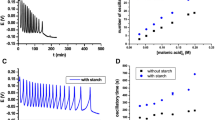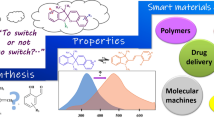Abstract
We introduce a new strategy for reduction in volumetric shrinkage of free radical photopolymerization. Our strategy is based on the reversible reaction of disulfide bonds under UV irradiation. Here, we synthesized 2,2′-dithiodiethanol diacrylate (DSDA), an acrylate monomer with disulfide bonds. The homolytic photocleavage of DSDA under UV irradiation generates thiyl radicals that can initiate polymerization. Volumetric shrinkage can decrease to 0.1% through a repeated “contraction–expansion–contraction” volume-adjustable process. We identified the mechanism that underlies volumetric shrinkage reduction. The photocleavage rate of DSDA under UV irradiation is slower than that of the added photoinitiator. Moreover, in the presence of the photoinitiator, most of the generated thiyl radicals undergo restoration and exchange reactions instead of polymerization initiation or chain termination. The free volume and structure of the polymer network are effectively tuned by the dynamic and reversible processes of gradual disulfide-bond homolysis and recombination during fast photopolymerization.




















Similar content being viewed by others
References
Lee TT, García JR, Paez JI, Singh A, Phelps EA, Weis S, Shafiq Z, Shekaran A, Campo AD, García AJ (2015) Light-triggered in vivo activation of adhesive peptides regulates cell adhesion, inflammation and vascularization of biomaterials. Nat Mater 14:352–360
Chen K, Zhou S, Yang S, Wu L (2015) Fabrication of all- water- based self- repairing superhydrophobic coatings based on UV- responsive microcapsules. Adv Func Mater 25:1035–1041
Crivello JV, Reichmanis E (2013) Photopolymer materials and processes for advanced technologies. Chem Mater 26:533–548
Dzwilewski A, Wågberg T, Edman L (2009) Photo-induced and resist-free imprint patterning of fullerene materials for use in functional electronics. J Am Chem Soc 131:4006–4011
Hernandez HL, Kang SK, Lee OP, Hwang SW, Kaitz JA, Inci B, Chan WP, Chung S, Sottos NR, Moore JS (2014) Triggered transience of metastable poly(phthalaldehyde) for transient electronics. Adv Mater 26:7637–7642
Wang Z, Shen Y, Haapasalo M (2014) Dental materials with antibiofilm properties. Dent Mater Off Publ Acad Dent Mater 30:1–16
Chen G, Ni M, Peng H, Huang F, Liao Y, Wang M, Zhu J, Roy VA, Xie X (2017) Photoinitiation and inhibition under monochromatic green light for storage of colored 3D images in holographic polymer-dispersed liquid crystals. ACS Appl Mater Interfaces 9:1810–1819
Scott TF, Schneider AD, Cook WD, Bowman CN (2005) Photoinduced plasticity in cross-linked polymers. Science 308:1615–1617
Liu J, Rad IY, Sun F, Stansbury JW (2014) Photo-reactive nanogels as a means to tune properties during polymer network formation. Polym Chem 5:227–233
Prof CEH, Prof CNB (2010) Thiol-ene click chemistry. Angew Chem Int Ed 49:1540–1573
Klikovits N, Knaack P, Bomze D, Krossing I, Liska R (2017) Novel photoacid generator for cationic photopolymerization. Polym Chem 8:4414–4421
Pineda P, Tyagi P, Agarwal S (2015) Low volume shrinkage polymers by photo polymerization of 1,1-Bis(ethoxycarbonyl)-2-vinylcyclopropanes. Polym Chem 6:2297–2304
Martin-Gallego M, Lopez-Manchado MA, Calza P, Roppolo I, Sangermano M (2015) Gold-functionalized graphene as conductive filler in UV-curable epoxy resin. J Mater Sci 50:605–610. https://doi.org/10.1007/s10853-014-8619-z
Ji L, Chang W, Cui M, Nie J (2013) Photopolymerization kinetics and volume shrinkage of 1,6-hexanediol diacrylate at different temperature. J Photochem Photobiol A 252:216–221
Marchesi G, Breschi L, Antoniolli F, Lenarda RD, Ferracane J, Cadenaro M (2010) Contraction stress of low-shrinkage composite materials assessed with different testing systems. Dent Mater Off Publ Acad Dent Mater 26:947–953
Agarwal A, Diedrich JK, Julian RR, Chem A (2011) Direct elucidation of disulfide bond partners using ultraviolet photodissociation mass spectrometry. Anal Chem 83:6455–6458
Prof PAF, Prof MJR (2004) Theoretical insights into the mechanism for thiol/disulfide exchange. Chem Eur J 10:257–266
Pepels M, Filot I, Klumperman B, Han G (2013) Self-healing systems based on disulfide–thiol exchange reactions. Polym Chem 4:4955–4965
Du X, Li J, Welle A, Li L, Feng W, Levkin PA (2015) Reversible and rewritable surface functionalization and patterning via photodynamic disulfide exchange. Adv Mater 27:4997–5001
Azcune I, Odriozola I (2016) Aromatic disulfide crosslinks in polymer systems: self-healing, reprocessability, recyclability and more. Eur Polym J 84:147–160
Michal BT, Spencer EJ, Rowan SJ (2016) Stimuli-responsive reversible two-level adhesion from a structurally dynamic shape-memory polymer. ACS Appl Mater Interfaces 8:11041–11049
Nicastri MC, Xega K, Li L, Xie J, Wang C, Linhardt RJ, Reitter JN, Mills KV (2013) An internal disulfide bond acts as a switch for intein activity. Biochemistry 52:5920–5927
Li Y, Nese A, Matyjaszewski K, Sheiko SS (2013) Molecular tensile machines: anti-arrhenius cleavage of disulfide bonds. Macromolecules 46:7196–7201
Sunder A, Mülhaupt R (2015) Addition-fragmentation free radical polymerization in the presence of olefinic dithioethers as chain transfer agents. Macromol Chem Phys 200:58–64
Evans RA, Rizzardo E (2015) Free radical ring-opening polymerization of cyclic allylic sulfides: liquid monomers with low polymerization volume shrinkage. J Polym Sci Part A Polym Chem 39:202–215
Li L, Feng W, Welle A, Levkin PA (2016) UV-induced disulfide formation and reduction for dynamic photopatterning. Angew Chem 55:13765–13769
Zhao T, Zhang H, Newland B, Aied A, Zhou D, Wang W (2014) Significance of branching for transfection: synthesis of highly branched degradable functional poly(dimethylaminoethyl methacrylate) by vinyl oligomer combination. Angew Chem 53:6095–6100
Wang J, Cheng J, Liu J, Gao Y, Sun F (2013) Self-floating ability and initiating gradient photopolymerization of acrylamide aqueous solution of a water-soluble polysiloxane benzophenone photoinitiator. Green Chem 15:2457–2465
Chen C, Li M, Gao Y, Nie J, Sun F (2015) A study of nanogels with different polysiloxane chain lengths for photopolymerization stress reduction and modification of polymer network properties. RSC Adv 5:33729–33736
Stoyanov S, Stoyanova T, Antonov L, Karagiannidis P, Akrivos P (1996) Thione-disulfide interchange of some heterocyclic tautomeric thiones and their symmetrical disulfides. Monatshefte Chem Chem Mon 127:495–504
Hearn Christine H, Turcu Elena, Joens Jeffrey A (1990) The near UV absorption spectra of dimethyl sulfide, diethyl sulfide and dimethyl disulfide at T = 300 K. Atmos Environ Part A Gen Top 24:1939–1944
Fagnoni M (2010) Modern molecular photochemistry of organic molecules. Wiley, New Jersey, p 474–476
Han J, Jiang S, Gao Y, Sun F (2016) Intramolecular-initiating photopolymerization behavior of nanogels with the capability of reducing shrinkage. J Mater Chem C 4:10675–10683
Heller NW, Clayton CR, Giles SL, Wynne JH, Walker ME, Wytiaz MJ (2017) Characterization of immiscibly blended polyurethane coatings part 1: selective staining for enhanced micro-Raman spectroscopy. J Coat Technol Res 14:163–175
Kamada J, Koynov K, Corten C, Juhari A, Yoon JA, Urban MW, Balazs AC, Matyjaszewski K (2010) Redox responsive behavior of thiol/disulfide-functionalized star polymers synthesized via atom transfer radical polymerization. Macromolecules 43:4133–4139
Xu Y, Chen D (2016) A novel self-healing polyurethane based on disulfide bonds. Macromol Chem Phys 217:1191–1196
Wang CH, Huang CC, Lin LL, Chen W (2016) The effect of disulfide bonds on protein folding, unfolding, and misfolding investigated by FT-Raman spectroscopy. J Raman Spectrosc 47:940–947
Acknowledgements
The financial support from the National Key R&D Plan (2017YFB0307800), the Special Funds of Jiangsu Province Key Research and Development (BE2015058), and National Natural Science Foundation of China (Grant No. 51273014) are gratefully acknowledged.
Author information
Authors and Affiliations
Corresponding author
Electronic supplementary material
Below is the link to the electronic supplementary material.
Rights and permissions
About this article
Cite this article
Chen, J., Jiang, S., Gao, Y. et al. Reducing volumetric shrinkage of photopolymerizable materials using reversible disulfide-bond reactions. J Mater Sci 53, 16169–16181 (2018). https://doi.org/10.1007/s10853-018-2778-2
Received:
Accepted:
Published:
Issue Date:
DOI: https://doi.org/10.1007/s10853-018-2778-2




